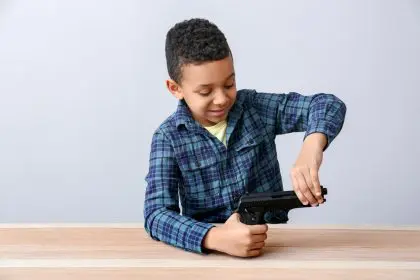As parents, we strive to protect our children from the many dangers they may encounter during their formative years. However, one of the most challenging battles parents face today is the possibility of their teenagers experimenting with drugs. The fear of your child being involved in drug use is overwhelming, and knowing where to look can be crucial. In many cases, teenagers may try to hide their activities from their parents, and they often get creative in finding places to stash drugs. This article aims to shed light on some of the sneaky places teenagers might hide drugs, helping you stay vigilant and take proactive measures to protect your child’s well-being.
1. Inside personal care products
Teenagers often use everyday personal care items as hiding spots for drugs. Commonly used items like deodorant sticks, lotion bottles or even shampoo bottles can be hollowed out or emptied and refilled with drugs. These items seem harmless and are less likely to raise suspicion, making them ideal for hiding small amounts of substances. As a parent, it’s important to occasionally check these items if you have any reason to be concerned.
2. Inside electronic devices
Modern teenagers are tech-savvy, and they know that parents might not think to check their electronic devices for hidden contraband. Old cell phones, gaming consoles or even inside the battery compartment of a remote control can be used to hide drugs. These devices often go unnoticed, especially if they appear to be functional or are considered junk that’s just lying around.
3. In clothing or accessories
Clothing and accessories offer numerous opportunities for hiding drugs. Hidden pockets in jackets, seams in backpacks or even inside shoes can be used as sneaky places to stash substances. Some teenagers might sew small pockets inside their clothing specifically for this purpose, making it difficult for parents to find anything unless they are actively searching.
4. Inside books or school supplies
Books and school supplies are often the last places a parent might think to check for drugs. Teenagers may hollow out the pages of a book to create a secret compartment or use a pencil case or a hollowed-out marker to hide substances. Since these items are associated with education, they are less likely to be questioned.
5. Behind posters or wall hangings
Posters and wall hangings in a teenager’s room can serve as more than just decorations. They can also be hiding spots for drugs. Teenagers might use double-sided tape or small hooks to create a small gap between the poster and the wall, where they can stash small items. Since posters are a common sight in a teenager’s room, they often blend in with the environment.
6. In food containers or snack packaging
Food containers and snack packaging are sneaky places for hiding drugs, as parents rarely think to inspect them. A bag of chips, a box of cereal, or even a candy wrapper can be used to store substances. Teenagers might carefully open the packaging, insert the drugs, and reseal it to make it look untouched.
7. Inside furniture or under bedding
Furniture offers various hiding spots that might go unnoticed during regular cleaning. Drawers with false bottoms, inside the lining of a mattress or even under the bed frame are all potential hiding spots. Teenagers know that parents might not check these places thoroughly, making them ideal for concealing drugs.
8. In the family car
The family car is another place where teenagers might hide drugs, especially if they believe their parents don’t check it regularly. They might stash substances in the glove compartment, under the seats or inside the trunk. Since the car is often used by multiple family members, it’s easy for teenagers to claim ignorance if something suspicious is found.
9. In outdoor hiding spots
Teenagers may also use outdoor hiding spots, such as inside a garden shed, under a loose brick in the driveway or even buried in the backyard. These locations are far from the prying eyes of parents and can be accessed without drawing attention. Outdoor hiding spots are especially common if the teenager is concerned about being caught with drugs inside the house.
10. In sports equipment or musical instruments
Sports equipment and musical instruments are often bulky and rarely inspected thoroughly. Teenagers might hide drugs inside a baseball glove, inside the tubing of a musical instrument or even within a hollowed-out section of a sports bag. These items are typically associated with hobbies or extracurricular activities, making them less likely to be scrutinized.
Why — and where — teens conceal drugs
Understanding the various sneaky places where teenagers might hide drugs is an essential step for any concerned parent. While it’s important not to jump to conclusions or invade your child’s privacy without reason, staying aware of these potential hiding spots can help you protect your teenager from the dangers of drug use. Open communication, trust and education are key components in preventing substance abuse. By being vigilant and knowing where to look, you can take proactive steps to ensure your child’s safety and well-being.
As you navigate the challenges of parenting, remember that the goal is to guide your teenager toward making healthy choices. By staying informed and engaged, you can foster an environment where your child feels supported and less likely to turn to substances as a coping mechanism. Together, you can work toward a future where your teenager can thrive without the risks associated with drug use.
This story was created using AI technology.
















